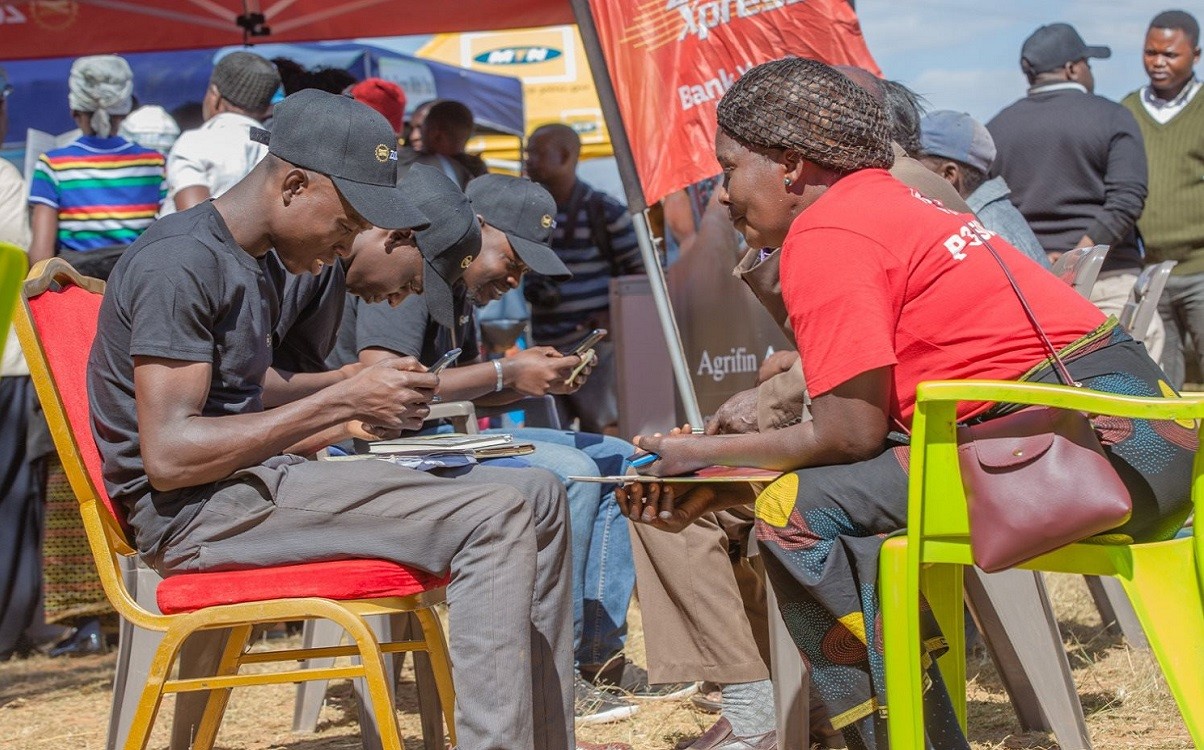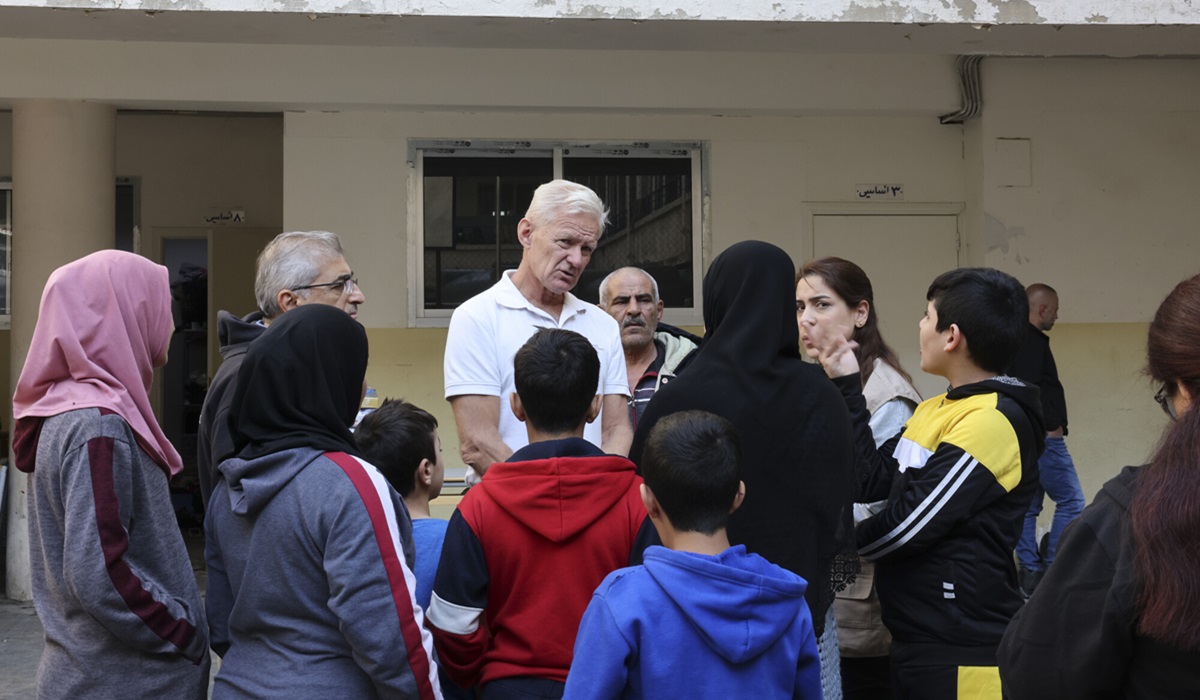Zambia has over two million smallholder farmers and a rural population of about 9.7 million people, with approximately 40% of them being financially excluded.
The average rural farmer in Zambia lives several kilometres away from their nearest neighbour and even further away from the nearest settlement where shops, agro-dealers and other services, such as agency banking and mobile money booths, would be located. Because the farmers live in remote locations making payments, sending and receiving money are activities not done at their convenience.
Zambia has over two million smallholder farmers and a rural population of about 9.7 million people, with approximately 40% of them being financially excluded. These rural people do not have adequate access to financial infrastructure and services. Not being able to make payments for supplies, receive digital payments or send money as needed means farmers’ productivity is limited. Subsequently, they cannot plan their next growing season, are unable to manage the shocks they may experience and cannot reach their potential. Therefore, providing smallholder farmers with the services they need to improve their productivity has a ripple effect on their livelihoods and the rural community.
Zanaco Bank recognized that smallholder farmers are an important segment of Zambia’s economy, and partnered with the UN Capital Development Fund (UNCDF) and Agrifin Accelerate (AFA)/Mercy Corps to develop and test the go-to-market strategy for an account that offers farmers services to transact, save, send and receive money. Zanaco will also add features such as agronomic information and financial literacy to help the farmers become more productive, be financially included and better participate in the Zambian economy.
How was AgriPay brought to market?
To bring the account – called AgriPay – to market, the partners undertook several activities. The first was a research conducted by AFA to understand precisely what the farmers needed and what their specific financial challenges were. This research informed the human-centred design process of product development undertaken by Zanaco.
Once a product was available, strategies were designed to bring the product to the rural market. This strategy involved applying the Booster Team model – a concept adapted from UNCDF’s work in Uganda with a coffee value chain. UNCDF championed the use of the Booster Team to onboard agents that would enhance last-mile service delivery and build a strong ecosystem around the use of the AgriPay account.
In addition, the Booster Team onboarded smallholder farmers. Zanaco, AFA and UNCDF also analysed what other factors would influence the success of AgriPay. One factor identified was collaborating with other players in the value chain that could provide linkages to agribusinesses. These linkages to agribusinesses turn shops or agribusiness locations into agents offering the banking services to smallholder farmers. These partners also leverage their network to onboard customers who could benefit from the services offered by the AgriPay account. By the end of the pilot, 50% of the Xpress Agents onboarded were a result of the partnership with Musika (a non-profit organisation that aims to support private sector development in small-scale agriculture) and 60% of the activated farmers accounts were members of the Cotton Association of Zambia.
The bank piloted the product in six provinces. The Booster Teams, comprising 15 – 20 youths, received adequate training in sales and product knowledge and approached potential customers with a product they could demonstrate.
Who opened AgriPay accounts?
The AgriPay pilot achieved what it aimed to do – increase access and usage of digital financial services by underserved segments of the population
In May 2019, Zanaco and UNCDF deployed the Booster Team to undertake their sensitisation and on-boarding activities, beginning in Central and Lusaka Provinces, continuing to Copperbelt, Eastern, Luapula, and Southern. Each Booster Team answered smallholder farmers’ questions or concerns in a timely manner. This first-tier support increased the customers’ confidence and comfort levels with the new account. Using the Booster Team enabled 307 Xpress agents to become part of the AgriPay ecosystem.
By September 2019, 3030 customers, 53% female and 31% youth, had been onboarded onto AgriPay, and farmers were pleased with the introduction of the account designed with their specific needs in mind.
Brillian Handondo, a farmer in Southern Province said, “This account has really helped me. Once I receive money, I’m able to easily transact, such as sending money to my child in college.” This simple transaction was not something she could do easily before.
What were the critical factors for AgriPay’s success?
The learnings gained from piloting AgriPay helped in scaling the product. One area of success was pre-sensitisation activities. This critical component was done through partners such as the Cotton Association of Zambia, Vitalite Zambia and the Dairy Association of Zambia and helped to build trust in the product. The partnerships with the various farmers’ associations, non-profit organisations, and other implementing partners meant these organisations could approach farmers as ‘ambassadors.’
These organizations leveraged their strengths to become agents or reach potential customers, for example, Cotton Association savings groups and Vitalite traders became agents for AgriPay.
These relationships were also a key driver to the Booster Team’s success. Having organisations facilitate these partnerships elevates the product because of the inherent trust agribusinesses and customers have in the partner or the agribusinesses they are used to working with. This is an immeasurable success factor for AgriPay.
To successfully scale AgriPay to other parts of Zambia, the sales team has to gain a better understanding of the culture of the communities. Conducting sensitisation activities requires that farmers are available and involves learning the type of farming conducted in the community and planning around the schedule farmers follow.
To improve rollout, the bank might consider using roving agents in some areas who could better reach farmers rather than agents using fixed locations like shops or booths.
The AgriPay pilot achieved what it aimed to do – increase access and usage of digital financial services by underserved segments of the population.
AgriPay is also successful because it provides a platform to increase farmers’ financial inclusion, and the account also allows digital expansion for the smallholder farmer and the community in which they live.
Schools, hospitals, district or provincial offices can leverage the digital platform to carry out other activities in the community. This digital ecosystem of services greatly improves life in these rural communities and farmers can become more active in the economy.









